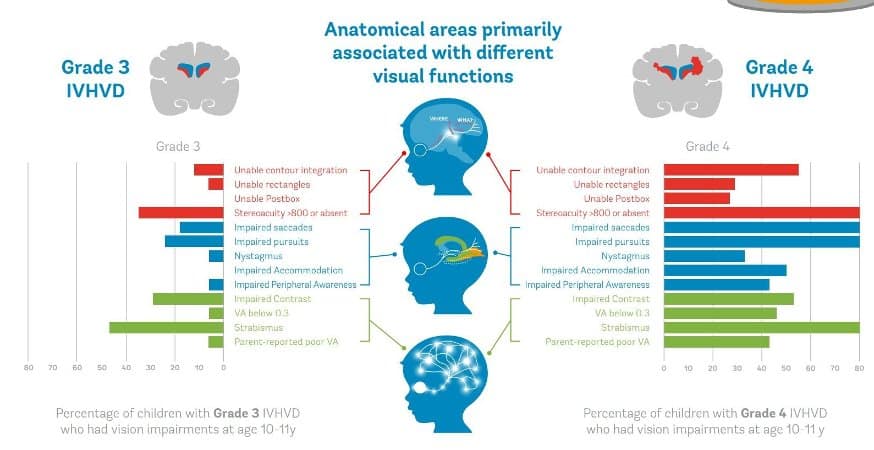
They investigated whether the Grade of IVHVD experienced as babies affected their visual outcome at the end of their primary school years and explored associations between visual outcomes with cognitive outcomes and with extra support at school.
Testers followed a protocol, and it was unknown to them whether the child had experienced Grade 3 or Grade 4 IVHVD and all other data.
The average number of impairments per child was six for children who experienced a Grade 4 IVHVD compared to three for children who experienced a Grade 3 IVHVD.
These sight problems affecting the children ten years later were often due to damage to the visual areas in the brain.The children’s parents were unaware of these problems and mostly reported their children had normal vision as long as any glasses they had were being worn.Cathy Williams, the study’s lead author and Professor of Pediatric Ophthalmology at Bristol Medical School: Population Health Sciences and Consultant Pediatric Ophthalmologist at University Hospitals Bristol and Weston NHS Foundation Trust (UHBW), explained: “Our research suggests that all children who experience brain bleeds or similar problems as babies should have eye tests to identify brain-related vision problems as they grow up, so that appropriate support can be offered to see if it is helpful for them.Vision function in children 10 years after grade 3 or 4 intraventricular haemorrhage with ventricular dilation: A masked prospective study.The visual examinations were part of a 10-year follow-up study for children in a randomized trialTesters followed a protocol and were masked to whether the child had experienced grade 3 or grade 4 IVHVD and all other data
The median (interquartile range) number of impairments per child was six (six to nine) for children who experienced a grade 4 IVHVD compared with three (two to four) for children who experienced a grade 3 IVHVD (p = 0.003)
